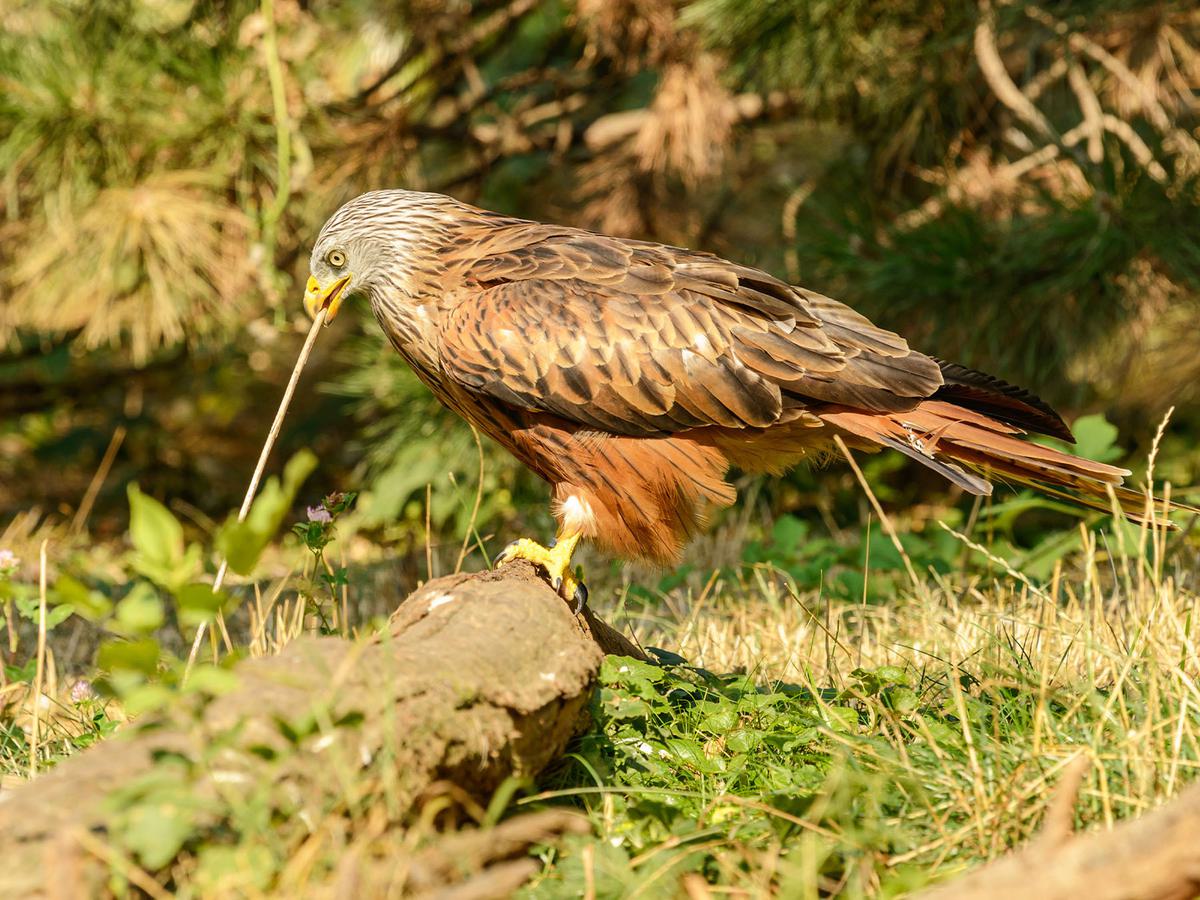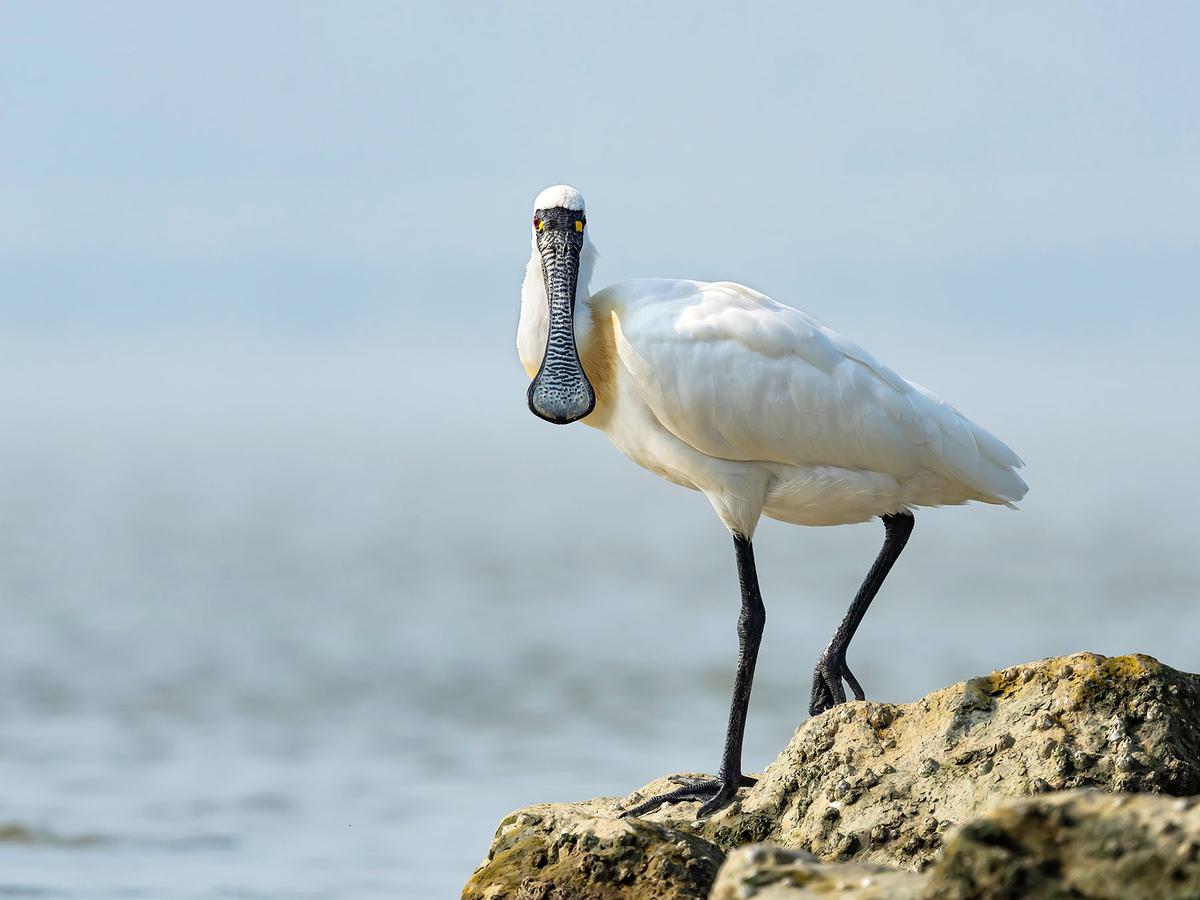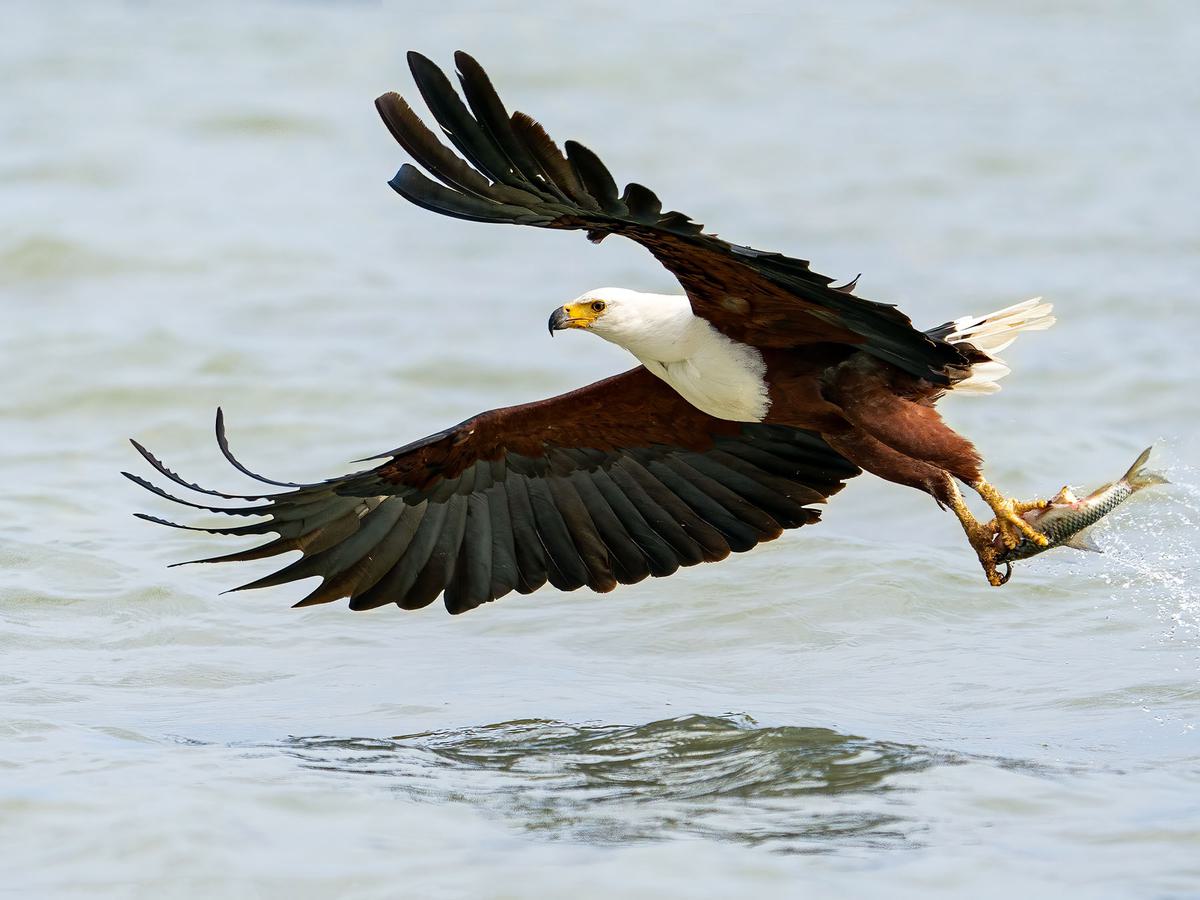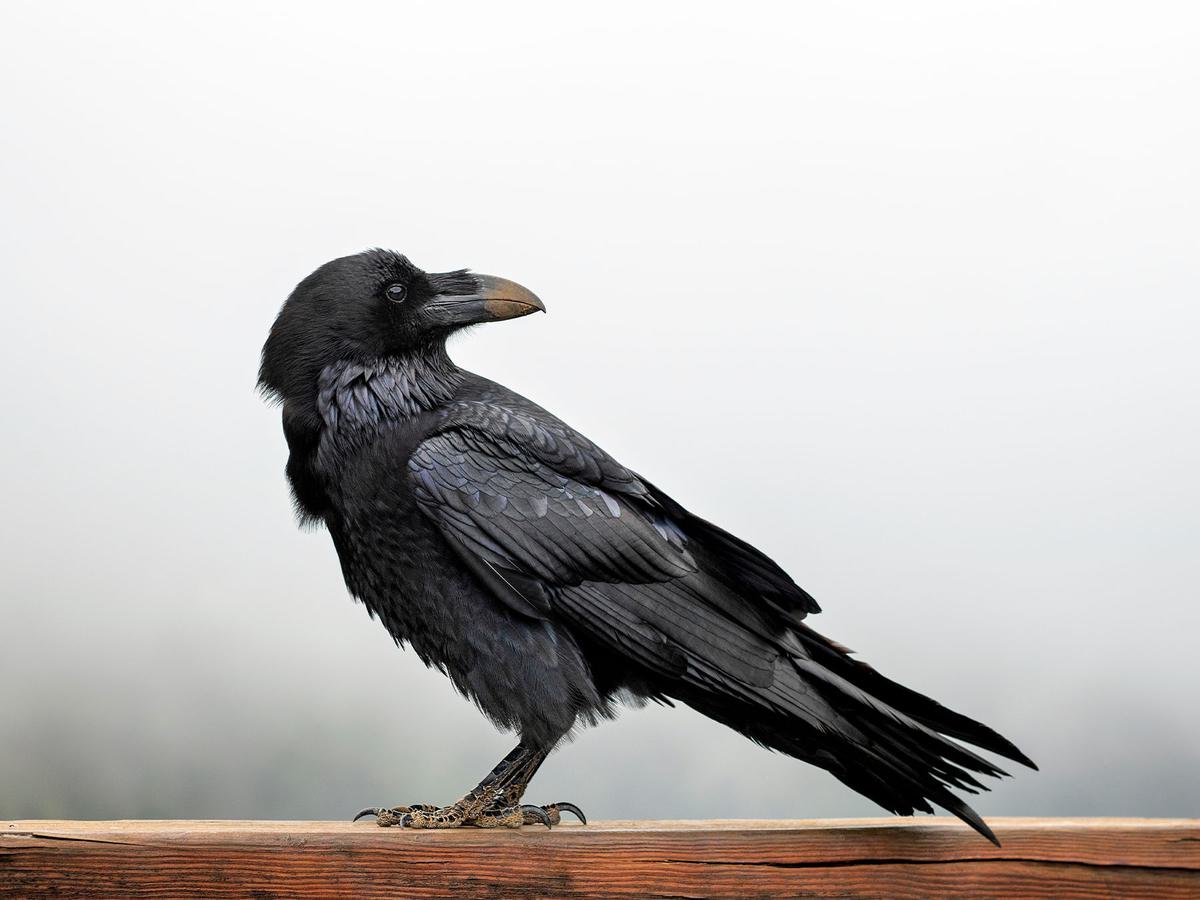Nervous System

Observing birds for any amount of time reveals remarkable behaviors like flight, specialized foraging techniques, and complicated social lives. These and other typical bird behaviors require advanced sensory organs and a powerful brain to match.
However, bird brain power relies on a broader system that includes a spinal cord and an intricate network of nerves and receptors all over the body. Together, these elements of the nervous system communicate data from the sensory organs to the brain for cognition and send commands from the brain to the body to coordinate locomotion and other bodily functions.
In this guide, we provide a broad overview of the avian nervous system and introduce some fascinating facts about its structure and function.
Anatomy of the Avian Nervous System
Brain Structure
The avian brain is a powerful organ responsible for coordinating movement, voluntary and involuntary actions, and processing information gathered by the various sensory organs.
The bird brain includes a large, smooth cerebrum/telencephalon, responsible for cognitive processing, a cerebellum for coordination and motor control, and a thalamus that passes sensory information to the cerebrum. The brainstem joins the brain to the spinal cord and is responsible for involuntary physiological processes and for passing signals from the brain to the body.
Neural Circuitry
Information and signals pass through the avian nervous system via a network of neurons, or nerve cells, interconnected by synapses. These neurons and synapses form complex neural circuits that transmit information related to specific functions. For example, birds have neural circuits involved in social decision-making and song-learning.
Spinal Cord and Nerves
The avian nervous system can be divided into two sections. The brain and spinal cord (connected by the brainstem) comprise the central nervous system, or CNS.
The nerves and ganglia found elsewhere in surrounding muscles and glands make up the peripheral nervous system, or PNS. This system transmits information to the spinal cord for interpretation in the brain but also receives ‘commands’ that direct actions or movements.

Birds have neural circuits involved in social decision-making and song-learning. Bluethroat in song.
Brain Functionality and Intelligence
Cognitive Abilities
Birds have advanced cognitive abilities necessary for rapid reaction to the various stimuli they encounter on a daily basis. For example, a foraging bird may need to process information from all its senses to find the right kind of food while watching and listening out for predators and keeping track of singing neighbors or potential mates.
Cognitive functioning isn’t only about acting on stimuli in generic or instinctual ways. Birds also have a remarkable capacity for memory, learning, and even problem-solving. Intelligence varies among species based on factors like diet and foraging techniques, but some birds are even on par with the mental capacity of great apes!
Communication Skills
Avians display varying degrees of social behavior, ranging from solitary birds like hawks to species that live in enormous flocks. Some birds even live in close-knit family groups that assist each other in chick-rearing.
No matter their life strategy, all bird species must have a way to communicate with other members of their species, and this is typically performed vocally using songs and calls. Visual displays are also important for many species and may involve posturing or specially evolved plumage and anatomy.
Knowing when to communicate involves information gathered by the sensory organs, and the actual act of communicating relies on commands sent by the central nervous system to the peripheral nervous system. Knowing how to communicate involves some instinct, but also requires advanced cognition in the form of memory and learning.
Navigation and Migration
Some birds restrict themselves to limited territories throughout the year, but many species live expansive lives, crossing continents each year on annual migrations. Navigating the world poses a special spatial challenge and relies on the nervous system in several key ways.
Firstly, birds must act on visuals and other information gathered by the senses. This information must be processed in the brain so that birds can alter or stay their course. Navigation and migration may also include elements of learning and memory for species that follow landmarks.

Navigating the world poses a special spatial challenge and relies on the nervous system in several key ways.. Adelie penguins during migration
Sensory Perception in Birds
Vision
Vision is the most important avian sense, essential for foraging, locomotion, and predator avoidance. Birds have a number of adaptations for improved vision, including tetrachromatic color vision and ultra-fast eyesight.
Want to learn more about bird vision? Check out this in-depth guide for much more on avian eyes and vision!
Hearing
Despite lacking external ears, birds rely on excellent hearing for detecting threats, finding food, and communicating with other birds. Great Gray Owls, for example, can pinpoint prey buried beneath snow, while Woodpeckers can hear the movements of invertebrates tunneling into wood.
Other Senses
Birds have all the other senses we have, and even some we don’t. Some birds have whisker-like feathers around their bill called rictal bristles for detecting movement, while some feeding Ducks have very sensitive bills for detecting food by ‘feel’ in murky water.
Birds can also taste, although they have a relatively low taste bud count. Parrots have over 300 tastebuds, which is a lot for a bird, but just 10% (or less) than what we have. Some songbirds may have just a few dozen.
As remarkable as it may sound, scientists have discovered that some birds can ‘see’ the Earth’s magnetic fields. This sixth sense is a useful skill for long-distance migrants.
Neuro-muscular Coordination
Flight Control
The cerebellum, which makes up over ten percent of the average bird brain, interprets information from sensory receptors in the muscles and joints and from balance receptors in the inner ear. Combining these signals is vital for coordinated flight.
Reflexes and Instinctual Behaviors
Reflexes are rapid, involuntary or instinctual responses that do not require any planning. The dilation or contraction of the pupil is an example of a reflex that happens automatically as light conditions change. These responses are also vital for instant action in response to physical threats like burning heat or the approach of a predator.
Reflexive actions follow specific neural pathways and do not necessarily require input from the brain. They may be triggered by impulses between the nerves and the spinal cord for a faster response.

Portrait of a Grey Nightjar. Some birds have whisker-like feathers around their bill called rictal bristles for detecting movement
Neurological Development and Learning
Brain Development
The avian brain begins development in the fertilized egg but is not necessarily complete on hatching. In domestic chickens, brain development begins in about the 21st hour of the first day of incubation. The degree of brain development when a baby bird hatches varies depending on the life strategy of the species.
Precocial chicks, like Goslings, hatch with well-developed brains since they must be able to move around, feed, and respond to stimuli in their environment from their first day. In contrast, an altricial songbird chick is born helpless and blind, with a relatively undeveloped brain.
Learning and Adaptation
Birds learn to survive through both insight and imitation. A young bird may learn to sing by imitating its elders or taking cues from a parent, but birds can also learn to imitate others by observing how they react to novel situations. Intelligent species like corvids can even solve new problems by using insights learned from other experiences.
During the course of the year, birds must adapt to changing weather conditions, food availability, and even habitats for species that migrate. The brain is highly adaptable in some species, showing significant seasonal changes in size and function. Each fall and winter, the hippocampus (responsible for memory) develops greatly in food-caching species like Chickadees to help them keep track of hidden food stores.
Challenges and Disorders of the Avian Nervous System
Common Neurological Disorders
The avian nervous system may be affected by the following disorders and infections:
- Hepatic encephalopathy is a metabolic disease that can cause neurological symptoms like loss of coordination, seizures, and partial paralysis in birds.
- Malnutrition can result in vitamin deficiencies and conditions like hypoglycemia and hypocalcemia. Neurological symptoms include depression and seizures.
- Bacterial infections like Listeria and Staphylococcus can affect the nervous system directly or cause damage or inflammation to surrounding tissues.
- Some viruses, fungi, and parasites also cause neurological symptoms in birds.
- Physical injuries like window strikes may cause brain or spinal trauma with associated symptoms.
Captive or domestic birds with neurological symptoms should be examined by a veterinarian who can identify the cause of nervous system problems and suggest possible treatments.
Impact of Environment and Toxins
Wild and captive birds can also suffer neurological damage from toxic substances in their environment or diet. Heavy metals like lead and zinc are common causes of dramatic symptoms like seizures, blindness, and paralysis, but other pollutants like hydrocarbons and insecticides are also dangerous for birds. Some human foods, like chocolate, are also toxic to birds and may cause serious illness.

Each fall and winter, the hippocampus (responsible for memory) develops greatly in food-caching species like Chickadees to help them keep track of hidden food stores. Black-capped Chickadee
Summary
Most bird watchers pay little attention to the complex internal processes that occur in our feathered friends, but the avian nervous system lies at the root of all the fascinating and entertaining behaviors that birds are so well known for.
From high-speed coordination in flight to instinctual reflex responses and even impressive intelligence, birds could not survive without their advanced brain, spinal cord, and peripheral nervous system.
Ongoing research continues to shed light on the fascinating secrets of the avian nervous system, which teaches us more and more about how birds interact with the world around them.
We now know that common pollutants like pesticides and heavy metals affect bird brains, which is just one more reason for us to collectively clean up our act and promote habitat restoration and bird conservation.



